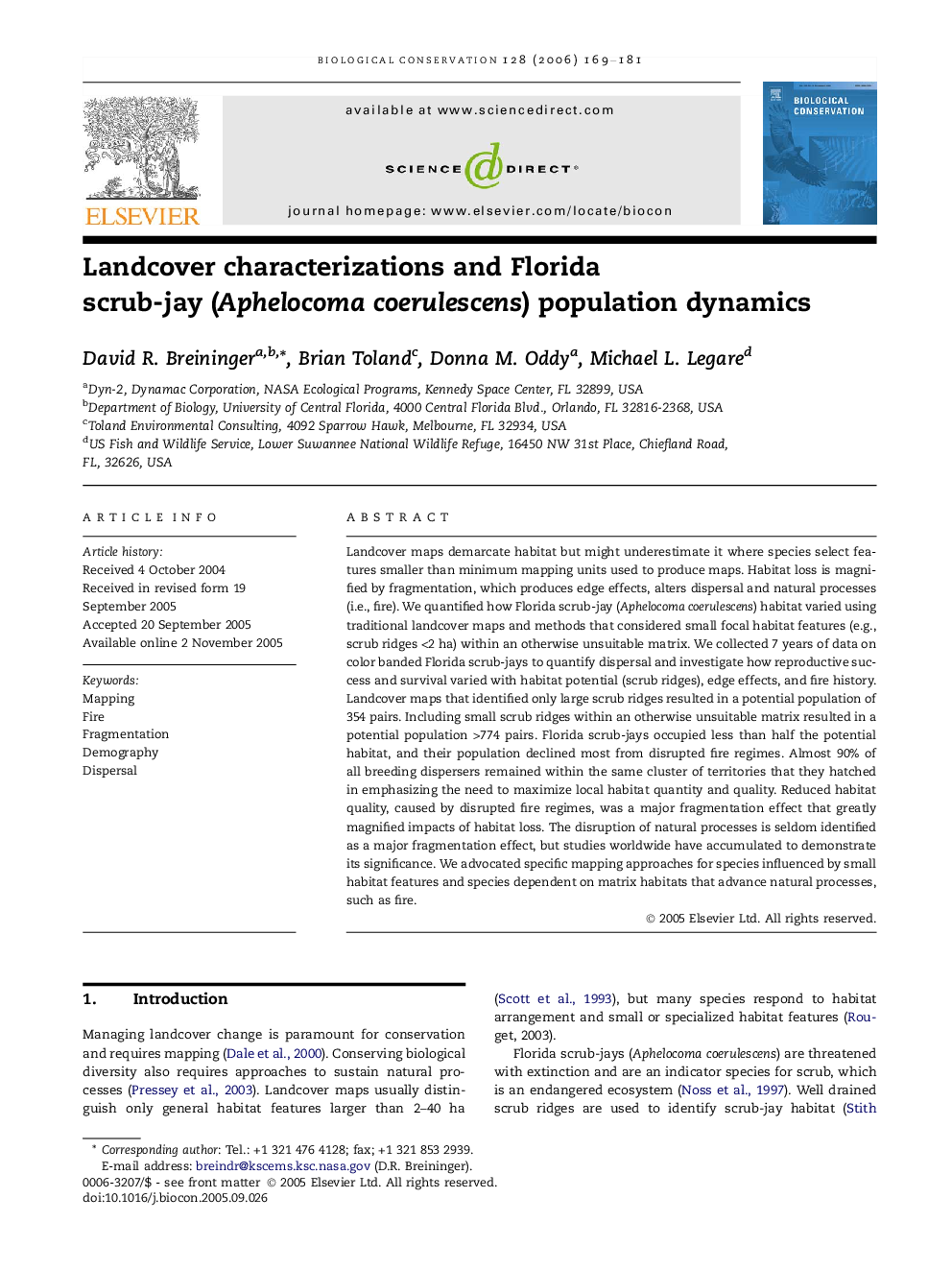| کد مقاله | کد نشریه | سال انتشار | مقاله انگلیسی | نسخه تمام متن |
|---|---|---|---|---|
| 4387829 | 1304628 | 2006 | 13 صفحه PDF | دانلود رایگان |

Landcover maps demarcate habitat but might underestimate it where species select features smaller than minimum mapping units used to produce maps. Habitat loss is magnified by fragmentation, which produces edge effects, alters dispersal and natural processes (i.e., fire). We quantified how Florida scrub-jay (Aphelocoma coerulescens) habitat varied using traditional landcover maps and methods that considered small focal habitat features (e.g., scrub ridges <2 ha) within an otherwise unsuitable matrix. We collected 7 years of data on color banded Florida scrub-jays to quantify dispersal and investigate how reproductive success and survival varied with habitat potential (scrub ridges), edge effects, and fire history. Landcover maps that identified only large scrub ridges resulted in a potential population of 354 pairs. Including small scrub ridges within an otherwise unsuitable matrix resulted in a potential population >774 pairs. Florida scrub-jays occupied less than half the potential habitat, and their population declined most from disrupted fire regimes. Almost 90% of all breeding dispersers remained within the same cluster of territories that they hatched in emphasizing the need to maximize local habitat quantity and quality. Reduced habitat quality, caused by disrupted fire regimes, was a major fragmentation effect that greatly magnified impacts of habitat loss. The disruption of natural processes is seldom identified as a major fragmentation effect, but studies worldwide have accumulated to demonstrate its significance. We advocated specific mapping approaches for species influenced by small habitat features and species dependent on matrix habitats that advance natural processes, such as fire.
Journal: Biological Conservation - Volume 128, Issue 2, March 2006, Pages 169–181